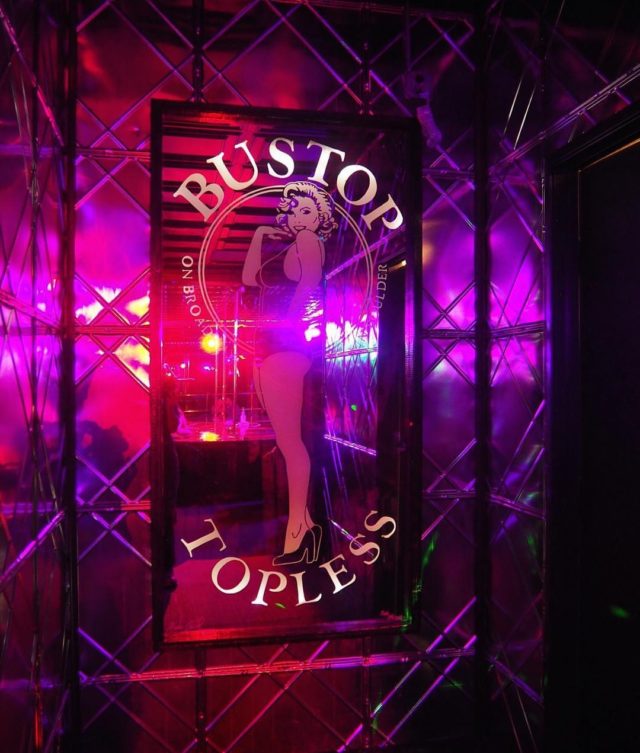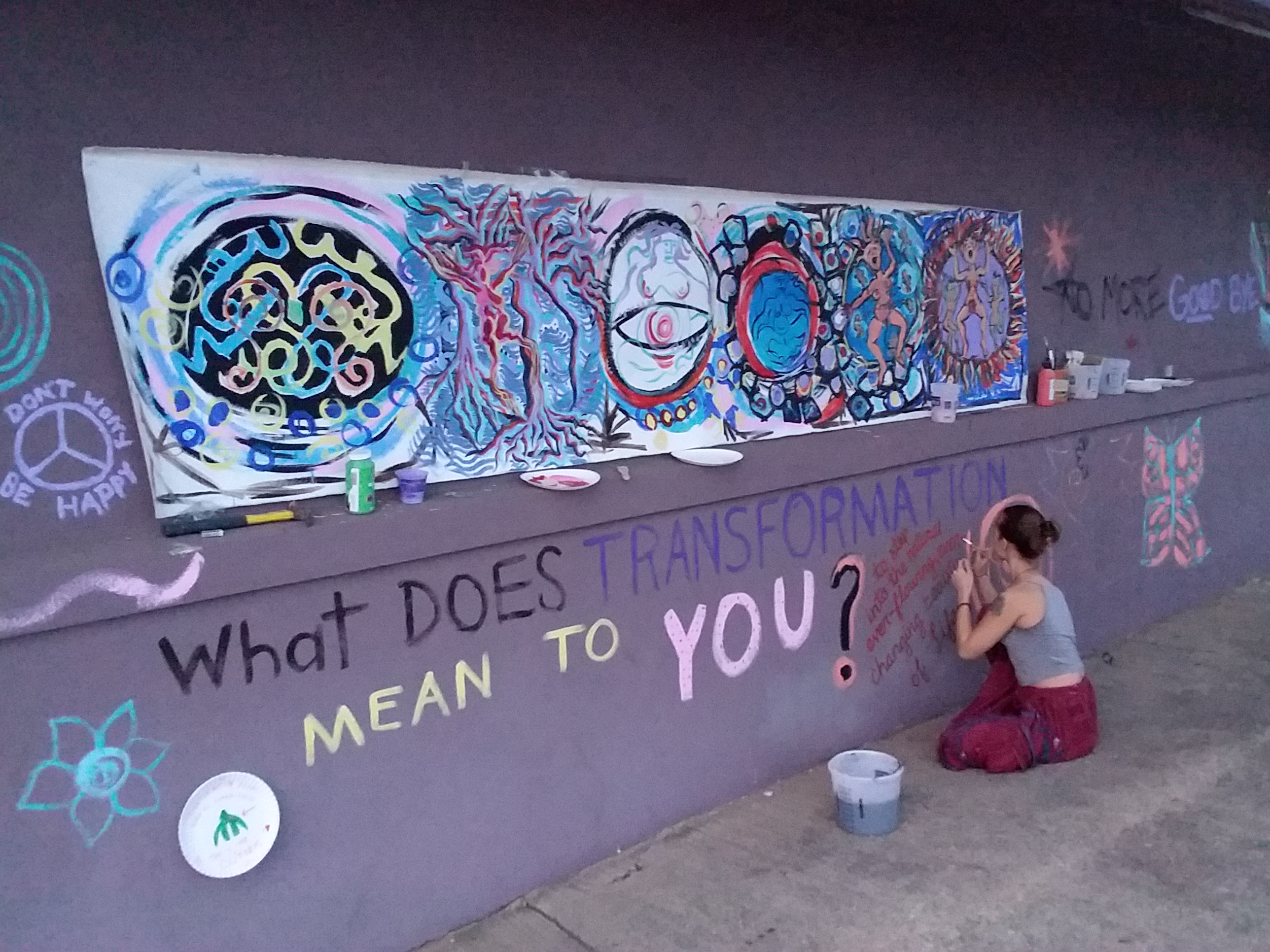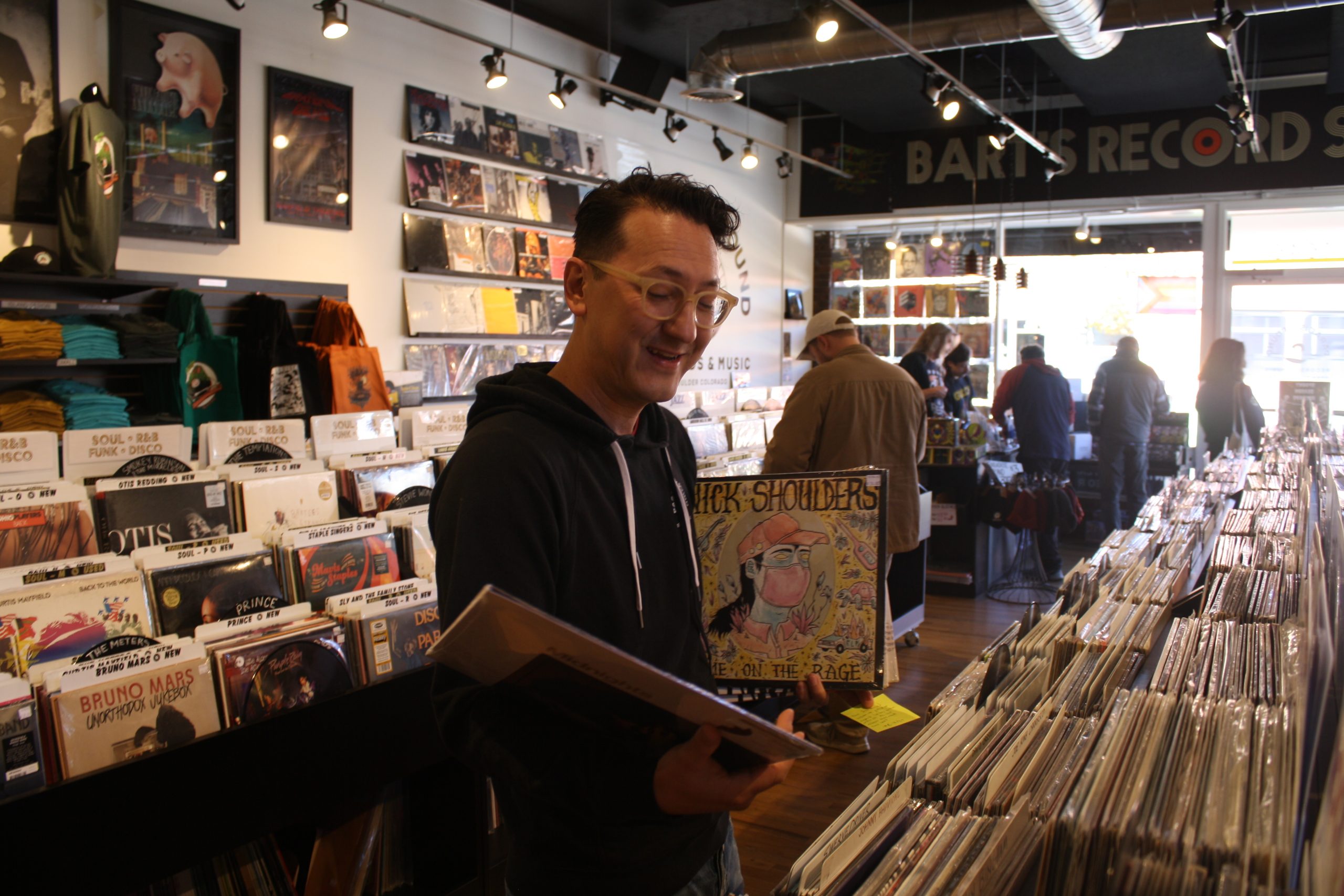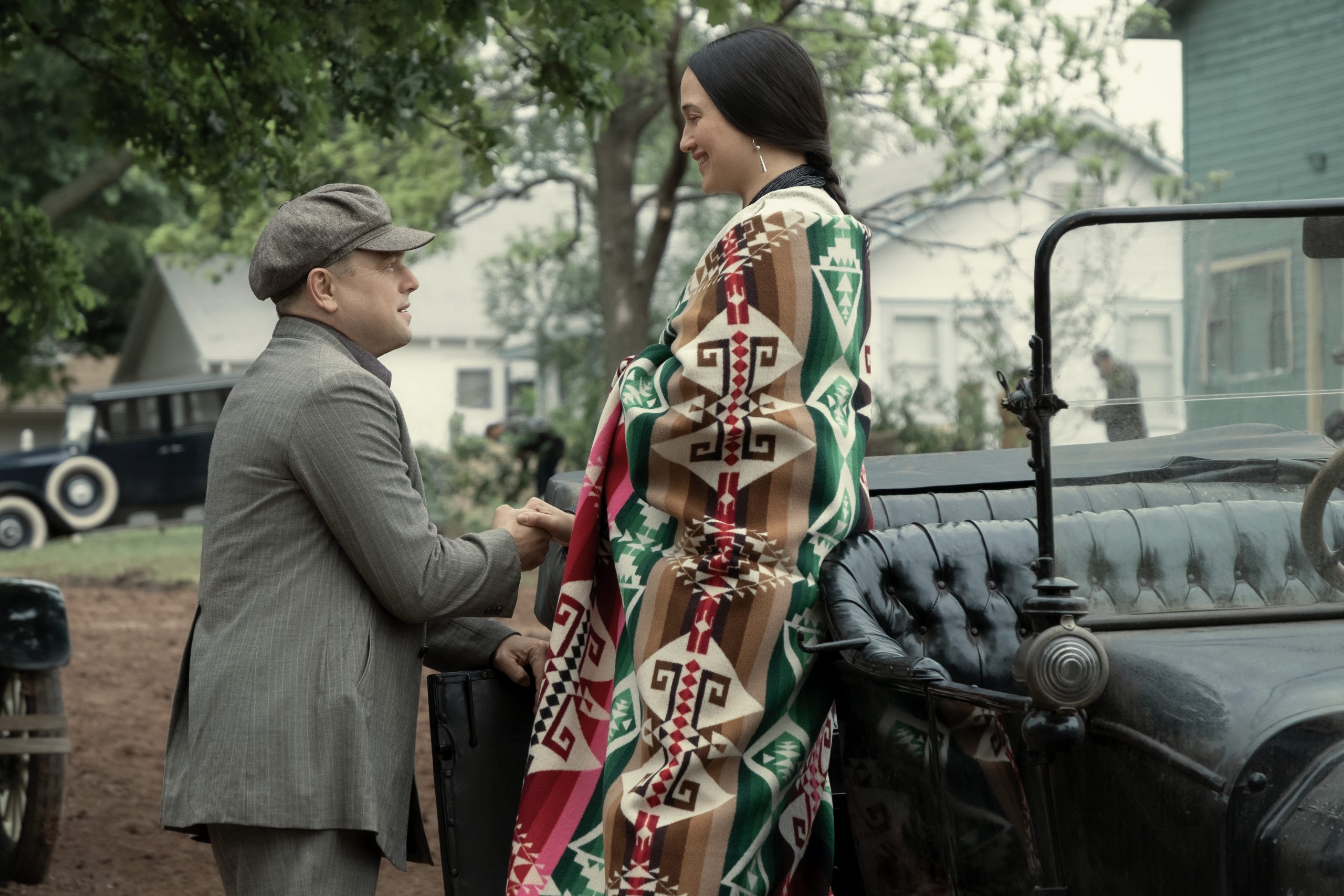
Dusk fell outside the Bustop Gentlemen’s Club on Broadway at the far edge of north Boulder. Skye, a Bustop regular dressed in a miniskirt and stiletto boots, hoisted herself up the chrome pole that had been erected in the parking lot as four other dancers shimmied and swayed around her to R&B.
Kneeling at the base of the pole, one of the dancers flicked a lighter and ignited a pool of kerosene in a circle of fire. Gripping the pole with her thighs, Skye spun upside-down, flames licking inches away.
The performance ended to thunderous applause from the 40 or so audience members, but contrary to strip club etiquette, not a single dollar bill was tossed. That’s because this wasn’t the typical nudie bar crowd, but an event held by local artists called Transforming the Bustop, commemorating the end of the club’s 42-year run and its replacement with affordable housing and artist space.
Though Sept. 1 marked the closing of the Bustop Gentleman’s Club and the building itself is soon to be demolished, its impact on the Boulder community — for better or for worse — is unlikely to fade anytime soon.
Community of friends
“It had been around so long you could just feel the energy of all the women who had ever been through there,” says Tesla, 30, who danced at the Bustop for three years. “I’ve worked all over the country and not many clubs you can just walk into and feel instant camaraderie among the women.”
“It’s a legacy of family that has been there for a long time that gets transmitted to every group of girls that works there,” says Dalia, 31, a 5-year veteran.
“All the girls there were very family, it felt like,” agrees Cinnamon, speaking of her four years at the club. “You go to other places and you’re lucky to find a couple of actual friends, [but] the girls there, we actually hung out.”
While the dancers generated the unique atmosphere, staff played a vital role in maintaining it.
“Best job I’ve ever had,” says Kurt, DJ and security from 2016 until its closing. “It was more of a community of friends.”
In 1993, Ken Scar responded to an ad in the paper for a DJ at the Bustop, but didn’t realize it was for a strip club until he came in for an interview.
“At first I was like, I don’t know if I can work at a place that takes advantage of women and demeans women,” he says. “But after you’re there for a while you realize it’s not that way at all, it’s quite the opposite: it’s the men that go in those places that are taken advantage of.”
Riding the Bus
A business like the Bustop couldn’t have subsisted for over four decades without a steady client base. Judging from the feedback of several of its former patrons, it’s clear the club had a certain appeal.
“I had a good time drinking, watching all the women in there,” says Jeff, 62, who first visited the Bustop soon after its 1977 opening. “Most of them were real friendly. The atmosphere was pretty open.”
Similarly, scads of online activity attested to the club’s early popularity.
“Miss the days of pool, poker and blackjack tables,” wrote NoCoGeezer, an on-and-off patron for 30 years, on an online forum dedicated to escorts called The Other Board.
Dozens of Yelp reviews also helped paint a picture of what things were like back in the day.
“I had my first experiance [sic]…at a gentlemens [sic] club here and I never expected that I would be discussing politics with a topless dancer wearing a necklace that said ‘Perfect Mom,’” recounted Aaron M.
“Nowhere else in the universe could you see a fellow classmate, a grad teacher, a friend’s mom and a girlfriend dance in the same day….” shared Uncle Fishbits.

Early Days
When the Bustop Night Club (as it was called at the time) opened its doors in 1977, it featured both women and men. In an ad in the Greeley Tribune, the Bustop boasted of being the “only club in [Colorado] that has male dancers for your pleasure,” and proudly featured Lee, NCAA wrestling champ of 1974.
Back in the mid-to-late ’80s, NoCoGeezer recalls the Bustop being more of a locals bar than a strip club. Thanks to the cheap beer, billiards, poker and blackjack tables, both men and women frequented the place, and he remembers one long stage he says resembled that of an old burlesque house.
When the club first changed hands, he says the single stage, billiards and card tables were switched out with several smaller stages and private dance areas, transforming the place from a “locals bar that just happens to also have boobs to a standard strip club and the hustle for tips and private dances.”
But it wasn’t until 1990, when Omar Aldabbagh took over, that the Bustop’s local legend status was ensured.
The reign of Aldabbagh
Amer “Omar” Aldabbagh, 66, was born in Baghdad, Iraq, entered the U.S. in 1973, and soon found work at a cluster of Chicago strip clubs owned by his older brother Ussama “Sam” Aldabbagh.
In 1974, Omar was arrested for a handful of liquor license violations and for being the “keeper of a disorderly house,” neither of which resulted in convictions, according to a 2014 City of Boulder Beverages Licensing Authority Preliminary Findings and Report.
In 1977, he was twice charged with the crime of keeping a house of prostitution, but that didn’t stick either. In written communications with the City of Boulder, he explained the arrest only happened thanks to a Chicago Police Department custom of pinching everyone on site during a raid.
Indeed, the Aldabbaghs insisted in media accounts that the police attention was nothing but harassment and that they were routinely shaken down by corrupt cops. Shortly thereafter, the Aldabbaghs started up several clubs in and around Phoenix, Arizona, yet their legal troubles followed close behind.
In 1979, the younger Aldabbagh was cited for more liquor license violations and was accused of allowing overexposed dancers and physical contact with patrons. In 1981 he plead guilty to permitting customers to play blackjack with real money and in 1983 the U.S. Department of Labor filed a lawsuit against him for allegedly withholding pay from staff. Though he denied the charges, he eventually paid out $5,500 in back wages.
Two years later Omar became a naturalized citizen and in 1990, he purchased the Bustop. Then the hammer dropped.
In 1992, 200 federal and state authorities raided over a dozen Aldabbagh establishments in Arizona, Minnesota and Colorado — including Omar’s Denver residence — garnering 30 arrests ranging from racketeering, to prostitution, to influencing and tampering with witnesses, to tax fraud.
According to media accounts at the time, the Arizona Department of Public Safety accused Aldabbagh and associates of being responsible for half of the prostitution in the Phoenix area, with Omar as the “major figure.”
The Federal Bureau of Investigation referred to Aldabbagh’s operations as a “perfect example of non-traditional organized crime that was operating at a sophisticated level,” while the state liquor director for Arizona dubbed him simply a “sleazy operator.”
Police also accused him of running shell corporations with hidden ownerships to throw regulators off the trail. Later that year he was indicted on nine counts of “knowingly” neglecting to file personal and business income tax returns from 1988-1992, all felonies.
Ultimately, Aldabbagh plead guilty to several misdemeanor charges of attempt to commit fraud, forfeited a quarter-million dollars in assets, was saddled with three years probation, and banned from further business in Arizona.
Since then, Aldabbagh appears to have stayed out of trouble, focusing on the Bustop, his two Las Vegas strip clubs, and breeding racehorses — including a former champion named Omar.
[Boulder Weekly made multiple unsuccessful attempts to contact Aldabbagh for this story.]
Unlike the Bustop, Aldabbagh’s reviews from former employees are mixed.
“I’ve met a lot of bar owners,” Scar says. “Most of them are kind of slimy and [Aldabbagh was] no exception.”
“He’s pleasant enough as long as you’re not really engaging with him,” Cinnamon says of her handful of interactions with him over the years.
“He’s definitely an opportunist,” she continues, while also acknowledging that “he provided a good environment for us.”
But it was the circumstances of the club’s closing that finally spoiled Aldabbagh’s reputation for many.

Closing time
Once Aldabbagh sold the 1.7 acre Broadway parcel to Allison Management for $2.8 million in 2016, it was clear the club’s days were numbered. Just the same, when the Sept. 1 closing date finally came, it ended up being a surprise to nearly everyone, particularly the dancers.
A few of the dancers say they learned the truth the day-of from an Instagram post, while others found out from the organizer of Transforming the Bustop Merlyn Holmes, who came into the club to ask if any of the dancers would like to perform for the Sept. 29 event.
“Staff members said [the club was] definitely staying open until next year,” Dalia recalls. “We were deliberately deceived.”
Kurt, the house DJ, corroborates the fact that the management kept a lid on things until the final night.
Sierra, a Bustop dancer from 2016 until its closing, says she personally addressed the potential closing with Aldabbagh a month earlier, reminding him there were 40 to 50 dancers who counted on the club to support them and their families. With this in mind, she asked him to provide them with a two-week notice when he finally decided to shut the place down.
“He assured me he would let us know when he knew, and that it was not going to be closing for another long while and not to worry,” she says. “And then he ended by telling me I was a pretty girl and I wouldn’t have a hard time finding a job elsewhere. And that’s when I knew he was totally full of shit.”
Shadow Side
Not everyone is mourning the end of the Bustop Gentleman’s Club. In fact, some locals are glad it’s gone.
For the past three years Beth Merckel has taught people how to make jewelry at her nonprofit, Boulder Metalsmithing Association, next door to the Bustop. She cites the #MeToo movement as a reason clubs like the Bustop that “objectify women” aren’t a positive influence in the community.
“I don’t like this whole concept of women as sexual objects,” agrees Susan Bertram, art therapist with Boulder Art Therapy Collective, who helped facilitate a mural painted on the wall of the Bustop at the Transforming event.
“I don’t like the commercializing of it for profit,” Betram says about stripping in general, while adding that she does “believe in women’s ability to choose however they want to live their life.”
One Boulder County resident and former stripper of seven years (who asked to remain anonymous), says the Bustop “existed because it profited from dehumanizing, objectifying and commodifying women. Men in the Boulder community participated in sexually subordinating women in this club.”
“It is a good day when even one of these ventures fails,” she says. “It will be an even better day when patriarchy has been eradicated from society and the exploitation of women and women’s bodies is unthinkable.”
Even some working dancers have misgivings about their chosen trade.
“For the most part [The Bustop] was a good place for me,” Sierra says, while adding that, “I definitely saw a lot of girls just get run down by the place.”
“You meet and see some people that, within a couple years that they start working there, they just completely declined,” Sierra admits. “The club can destroy a person.”
It’s a Living
Aria, a 22-year-old former Bustop dancer, doesn’t see herself as oppressed and doesn’t appreciate those who do.
“I get really annoyed when people come in and try to save us,” she says. “People act like they are so above us. I know that I’m an honest person and trustworthy and… yet I’m bad because I’m doing this? It’s like, fuck you.”
Aria started at the Bustop as a cocktail waitress to help pay her tuition at CU Boulder. But the long hours for low pay took their toll and when she got sick, she decided to switch to dancing.
“Dancing saved my life, definitely,” says Tesla. “I have a house, two cars, I travel, I just got my welding certificate. But when I came here I was homeless with nothing. … Dancing was the only way I was able live a reasonable life and not kill myself with work.”
While nearly all Bustop dancers cited money as their prime motivator — up to $1,000 a night, in some cases — it’s far from the only one.
“Everyone is here for a reason,” says Dalia. “We all have issues that we’re bringing into it that we’re trying to get over by doing this.”
She says stripping allowed her to live a creative life, one she could control instead of having to conform to society. While she used to be worried about what other people thought about her, now she’s “not afraid anymore. I don’t care if I’m controversial because I’m actually happy.”
Tesla believes stripping also serves a greater societal good by unstifling sexuality and says people have told her that her dancing has helped save their marriage. She even found dancing has made her a stronger self-advocate.
In 2012, Gesel Mason, former dance and theater assistant professor at CU Boulder, organized a dance performance at the Bustop to explore female sexuality.
A proponent of sexual expression through art, Mason sees nothing wrong with women undressing onstage, but articulates that “the problem [with stripping] is the erotic has been coopted by the pornographic.”
“In a system that rewards women for their looks and a system that rewards men for their wealth, strip clubs are apple pie to America,” she says.
Where Are They Now?
Skye, Tesla, Cinnamon, Livi, Sierra and Aria have all found work in other clubs around the Front Range, Denver and the country.
Sierra, however, admits it’s “not really what I want to be doing anymore.”
“It’s exhausting, it’s draining, and it’s just a constant 24/7 party,” she explains. “Eventually you kind of just need a break.”
Dalia, too, is thinking of calling it quits. As a self-described “curvier girl,” she’s learned that most Denver-area clubs don’t hire dancers with her “sort of body type.”
Instead, she’s been focusing on her music and creating a documentary about strippers, whose GoFundMe page touts an “unprecedented glimpse into the positive aspects of being a stripper.”
Looking at her time at the Bustop in the rear-view mirror, Dalia mentions another Bustop dancer who she says plans to carry that “idea of friendship and community” to other area clubs. Dalia says it warmed her heart to hear that message and has high hopes that — even when the Bustop is just a memory — other members of the “family” will continue to transform the industry simply by being who they are.



